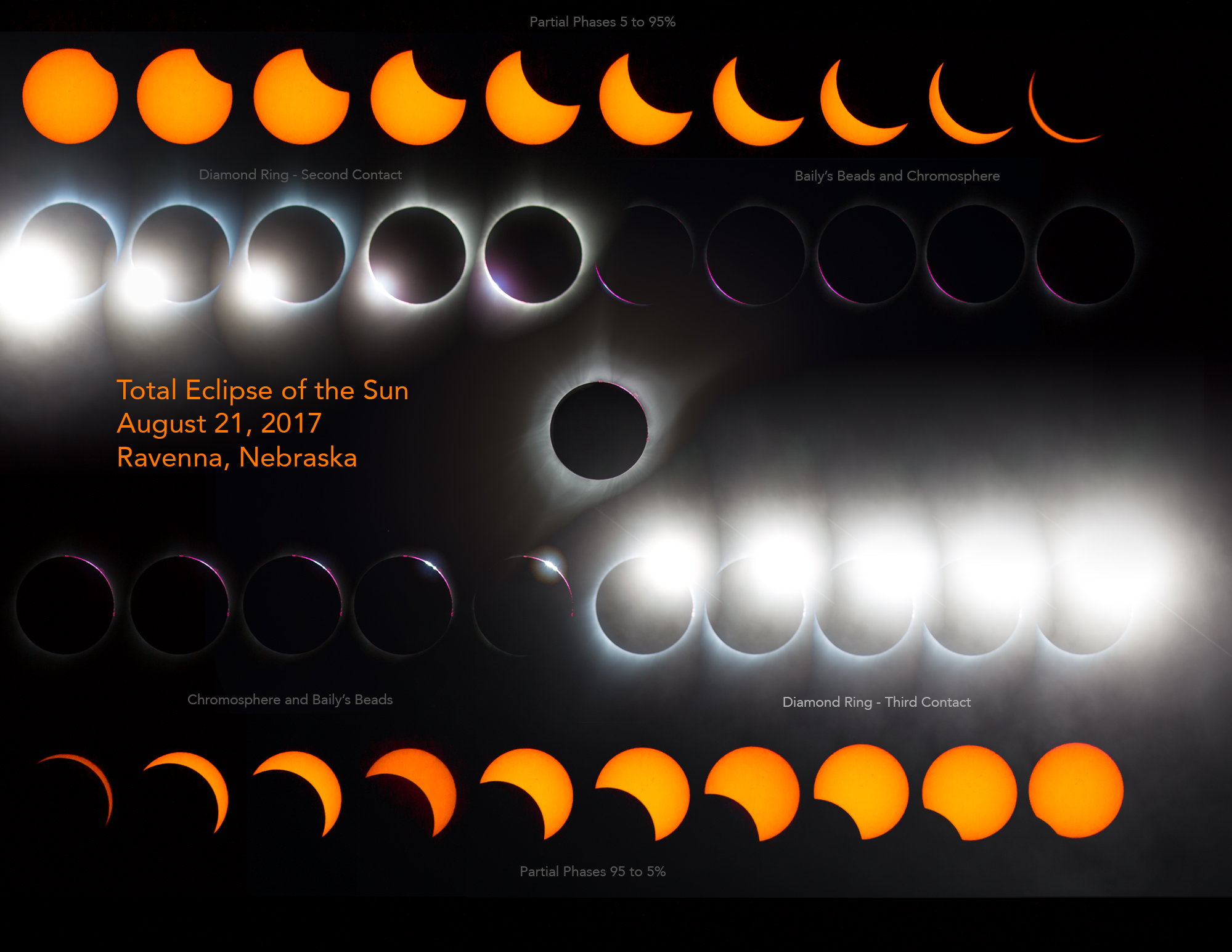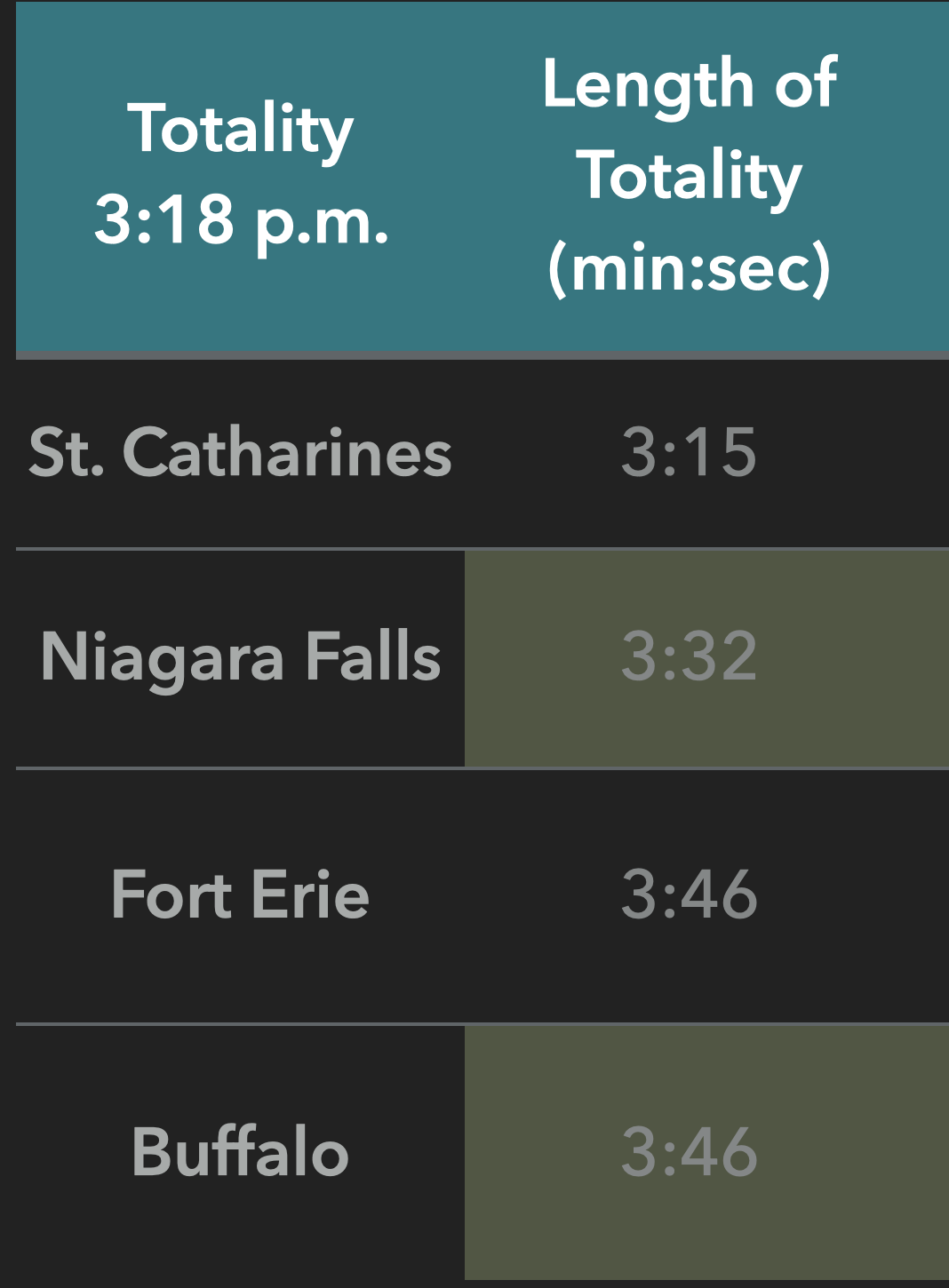Monday, April 8, 2024 - Total Eclipse of the Sun
Niagara’s total eclipse of the Sun will happen on Monday, April 8. At 3:18 p.m. the Moon will cover 100% of the Sun.
A total eclipse of the Sun has five phases:
1. The eclipse begins with first contact once the Moon begins to cover the Sun. This can only be observed with a safe solar filter. In Niagara, the eclipse will start at 2:04 p.m.
2. The Moon will continue to cover more and more of the Sun. At 3:18 p.m. it will cover 100% of the Sun. This moment is called second contact.
3. Totality begins and it is now safe to look directly at the Sun without any filters. For a few brief minutes we will see the white glow of the sun’s corona streaming away from the Sun and possibly pink or red prominences near the dark circle of the Moon.
4. Totality ends a few minutes later, which is called third contact. At this point, you must resume using a solar filter to look at the Sun.
5. Now, the Moon will cover less and less of the Sun until the eclipse ends at 4:32 p.m., a moment called fourth contact.
The exact time of the start of totality to the second will depend on where you are in Niagara. Your location will also affect the length of totality.
In the southeast of Niagara, Port Colborne and Fort Erie will see the longest duration of totality, while in the northwest, Grimsby will see the shortest.
In Fort Erie, the eclipse will begin at 2:04 p.m. Totality will be at 3:18 p.m. and last for 3 minutes and 44 seconds. The eclipse will conclude at 4:32 p.m.
In Grimsby, the eclipse will start and end at the same times, but totality will be shorter, lasting 2 minutes and 40 seconds.
All the other cities in between the two ends of Niagara will have a shorter duration of totality than Fort Erie but longer than Grimsby. Placing yourself in or near Fort Erie will give you the longest totality experience.
The city of Hamilton (just outside Niagara) will experience a shorter totality of 1 minute and 48 seconds.
The city of Toronto will not see totality, only the partial phases. We are sure that many GTA residents will drive to Niagara to experience totality. They should expect the Region’s major highway, the Queen Elizabeth Way, to be very busy and slow.
On the map, shaded areas will see some part of totality. The blue line at top is the upper end of the totality zone. The red line through Buffalo is the centre line of the eclipse and indicates where the longest duration of totality can be seen. (Downtown Buffalo only gets a second or two more more than Fort Erie.)
Map courtesy of www.eclipsewise.com
Click
here for an interactive map.
The Niagara Centre is not hosting an event for the total eclipse of the Sun. There will be dozens or probably hundreds of events and parties scattered across the Region. Contact us if you have questions about planning a safe and enjoyable event.




